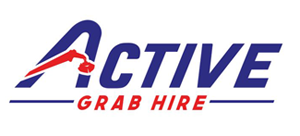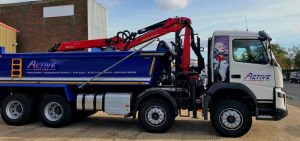When it comes to waste disposal, choosing the right method can significantly impact the efficiency and cost-effectiveness of your project.
Two popular options are Grab Hire and Skip Hire, each offering distinct advantages and tailored for specific needs. Understanding the differences between these services will help you make an informed decision that suits your requirements.
Grab Hire is renowned for its flexibility and efficiency, making it a preferred choice for many large-scale and time-sensitive projects. In contrast, Skip Hire provides a straightforward solution for various waste disposal needs, especially for those looking for convenience and long-term options.
This article delves into the specifics of each service, highlighting their benefits, costs, environmental impact, and overall convenience.
What is Grab Hire?
Grab Hire involves the use of a grab lorry equipped with a hydraulic arm and bucket to collect and remove large quantities of waste quickly.
This service is particularly beneficial for construction sites, landscaping projects, and any situation where waste needs to be cleared promptly. The hydraulic arm can reach over fences and obstacles, making it ideal for areas with restricted access.
The primary advantage of Grab Hire is its efficiency. The lorry can collect a significant amount of waste in one go, which is particularly useful for large-scale projects.
Additionally, there is no need for permits in most cases, as the lorry does not have to remain on-site. This saves both time and money, as the waste is collected and removed in one swift operation.
What is Skip Hire?
Skip Hire involves renting a skip, which is delivered to your site and collected once it is filled with waste. Skips come in various sizes, making them suitable for different types of projects, from small home renovations to larger commercial jobs.
The skip remains on-site for the duration of the hire, allowing you to fill it at your own pace.
One of the key benefits of Skip Hire is its convenience for smaller projects where waste accumulates over time.
You can keep the skip on-site for as long as needed, offering flexibility in terms of waste disposal. Additionally, having a skip on-site means you can manage your waste more effectively, ensuring that it is disposed of correctly and in compliance with local regulations.
Cost Comparison
When comparing costs, it’s essential to consider the specific requirements of your project. Grab Hire often proves to be more cost-effective for larger projects due to its ability to remove large volumes of waste quickly.
The cost usually includes the lorry and the operator, making it a comprehensive solution for extensive waste disposal needs.
On the other hand, Skip Hire can be more economical for smaller projects or where waste is generated gradually. The cost varies depending on the size of the skip and the duration of the hire.
While Skip Hire might require additional permits if placed on public property, it offers a straightforward pricing structure that can be budget-friendly for long-term projects.
Environmental Impact
Grab Hire has a relatively lower environmental impact due to the efficiency of the waste collection process. Fewer trips are needed to remove large amounts of waste, reducing the overall carbon footprint.
Additionally, many Grab Hire services focus on recycling and responsible waste disposal, contributing to more sustainable practices.
In contrast, Skip Hire might involve more frequent collections, especially if smaller skips need to be used for larger projects.
This can lead to a higher environmental impact due to increased vehicle emissions. However, many skip-hire companies also prioritise recycling and proper waste management, mitigating some of the environmental concerns.
Convenience and Accessibility
One of the most significant advantages of Grab Hire is its ability to access hard-to-reach areas. The hydraulic arm can extend over obstacles, allowing waste to be collected from locations that might be challenging for skips.
This makes Grab Hire an excellent option for sites with limited access or where space is at a premium.
Skip Hire offers convenience in terms of on-site waste management. Having a skip on-site means you can dispose of waste as it is generated, keeping your work area tidy and organised.
This is particularly useful for smaller projects or situations where space allows for the skip to be placed without obstructing workflow.
Conclusion
In summary, both Grab Hire and Skip Hire offer distinct advantages depending on the nature of your project. Grab Hire excels in efficiency, flexibility, and environmental considerations, making it ideal for larger, more demanding projects.
Skip Hire, however, provides convenience and cost-effectiveness for smaller, long-term projects. Assessing your specific needs will help you determine the best option.
Ultimately, the choice between Grab Hire and Skip Hire hinges on your project requirements.
For quick, efficient waste removal, Grab Hire is often the superior choice. If you need a more gradual, flexible waste management solution, Skip Hire might be the better option.
For tailored advice, consider consulting with waste management professionals who can guide you based on your specific circumstances.





